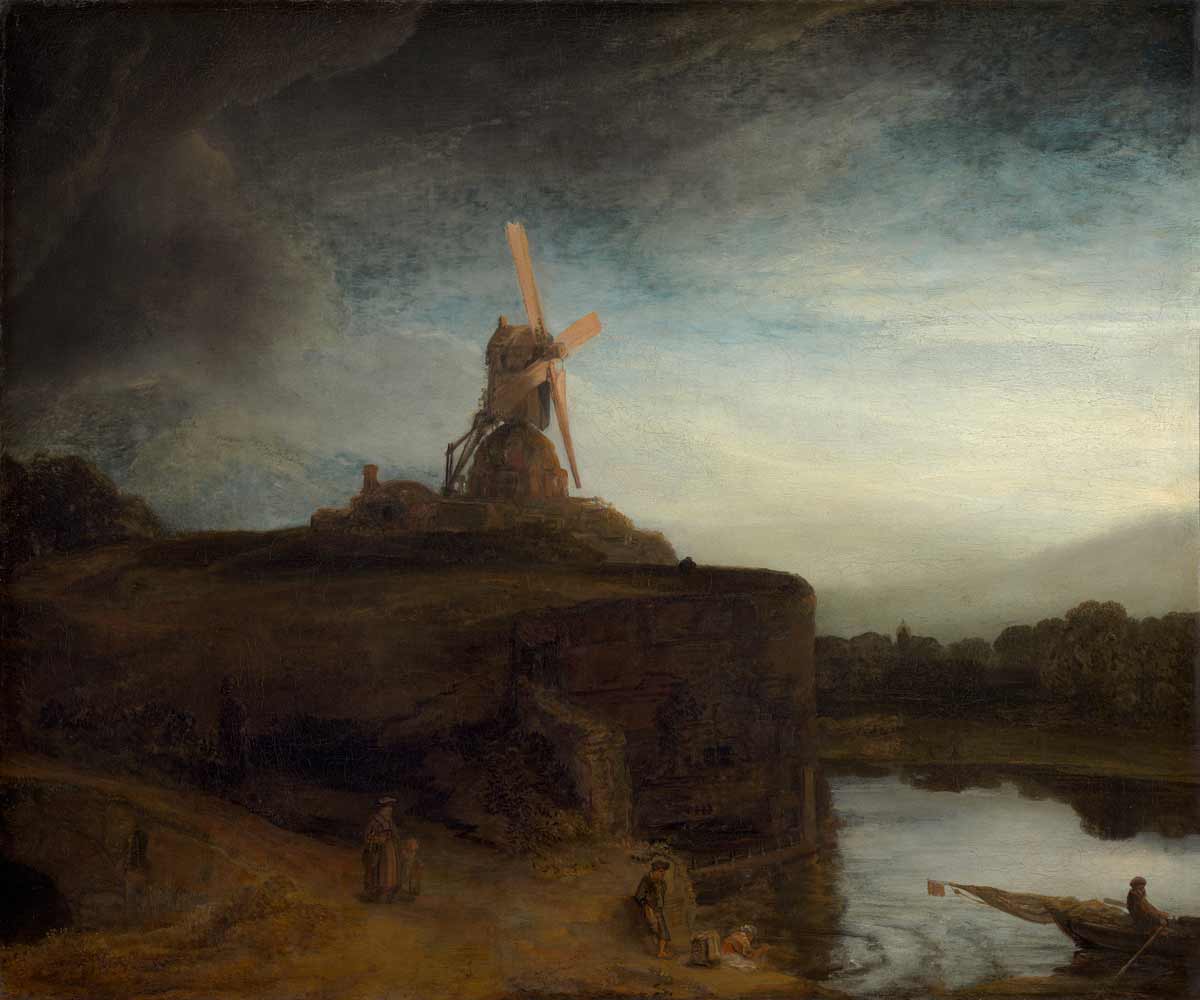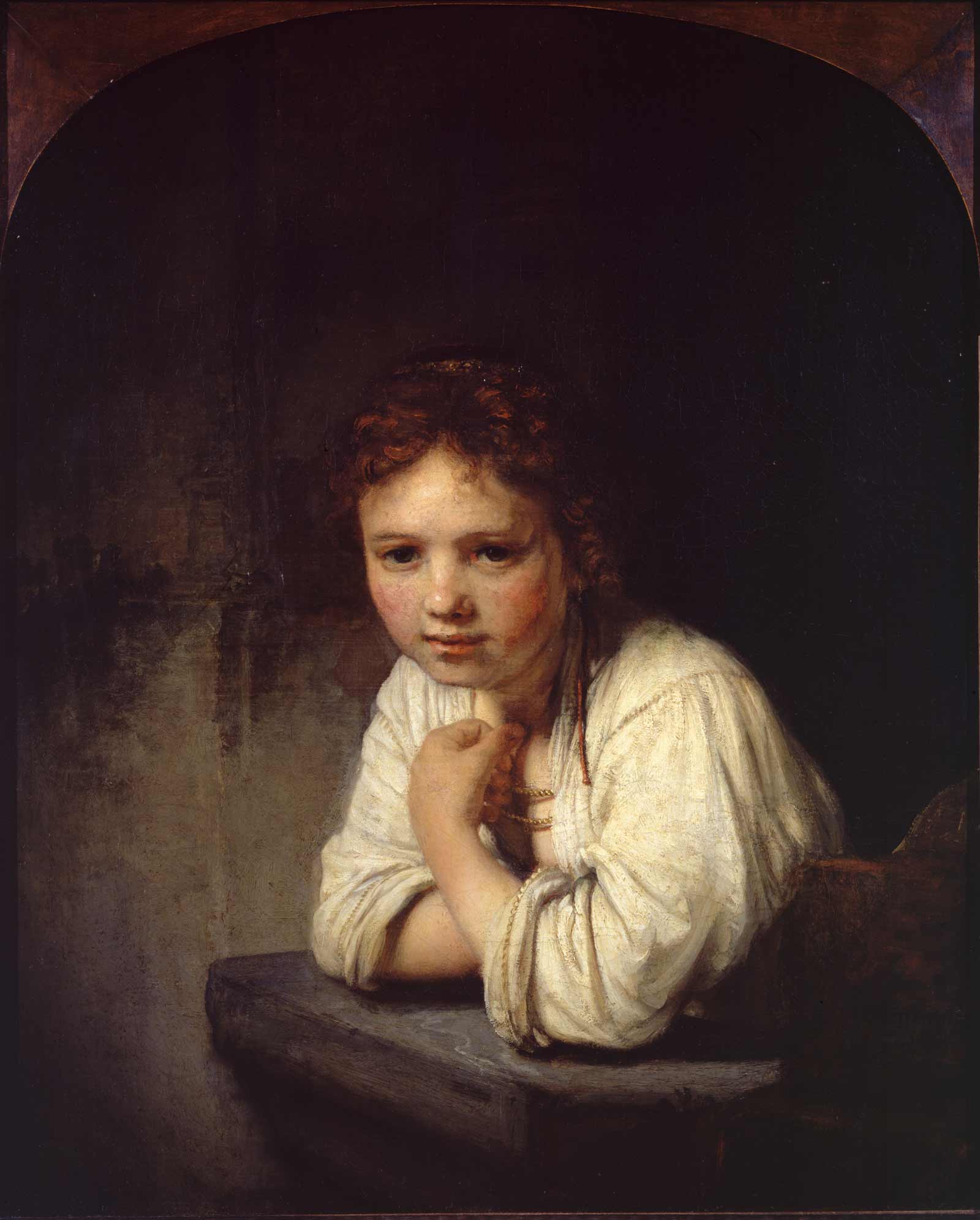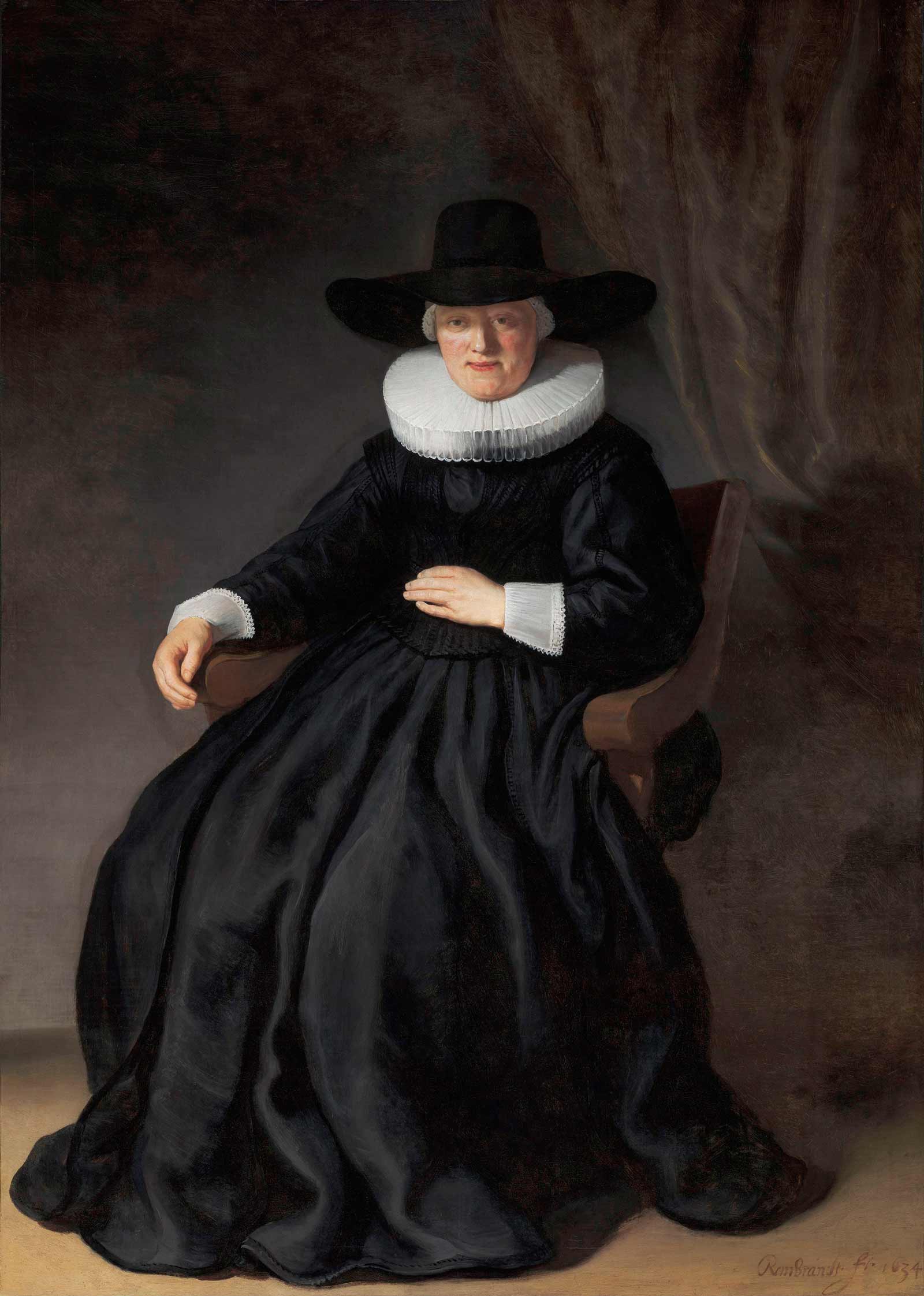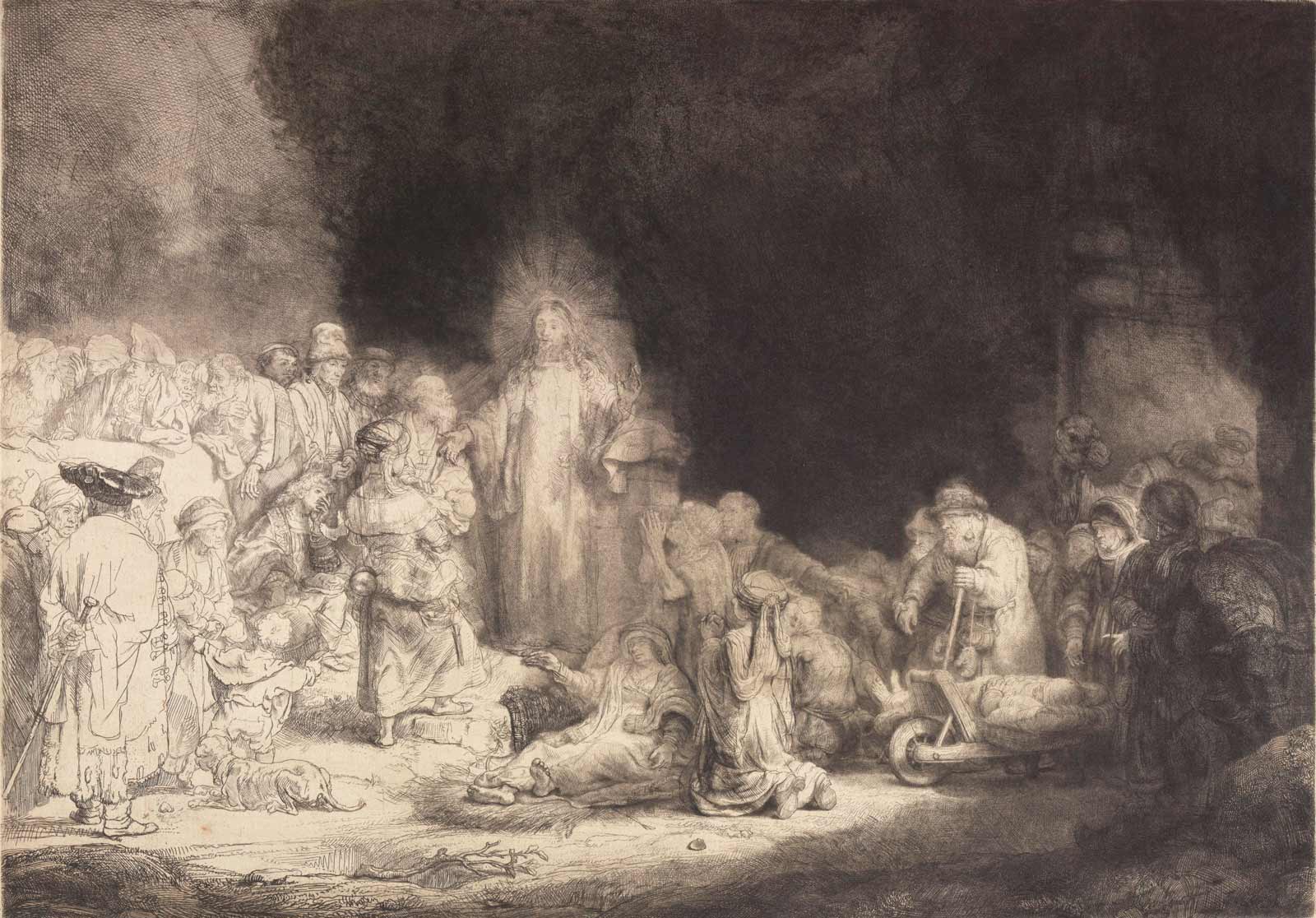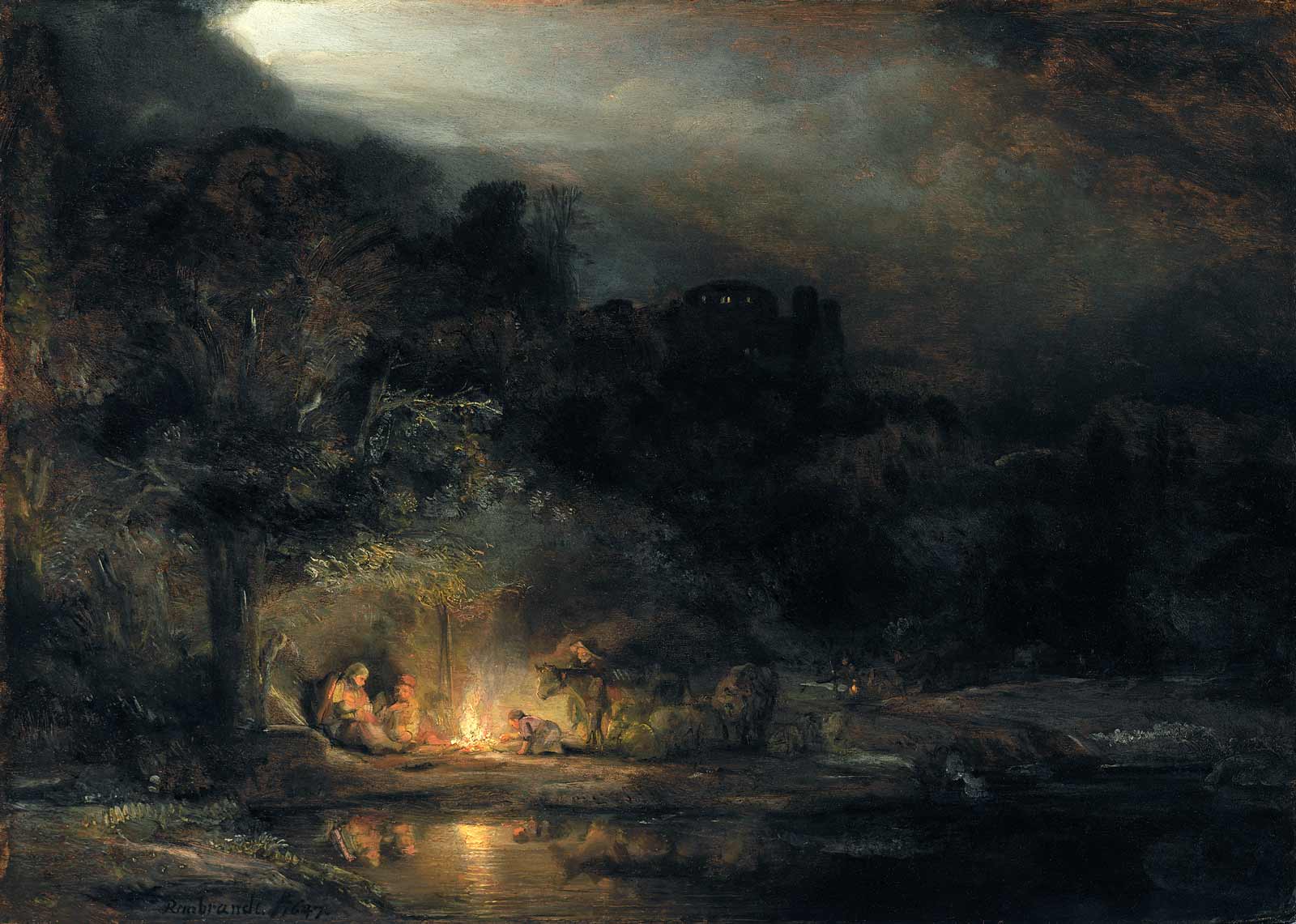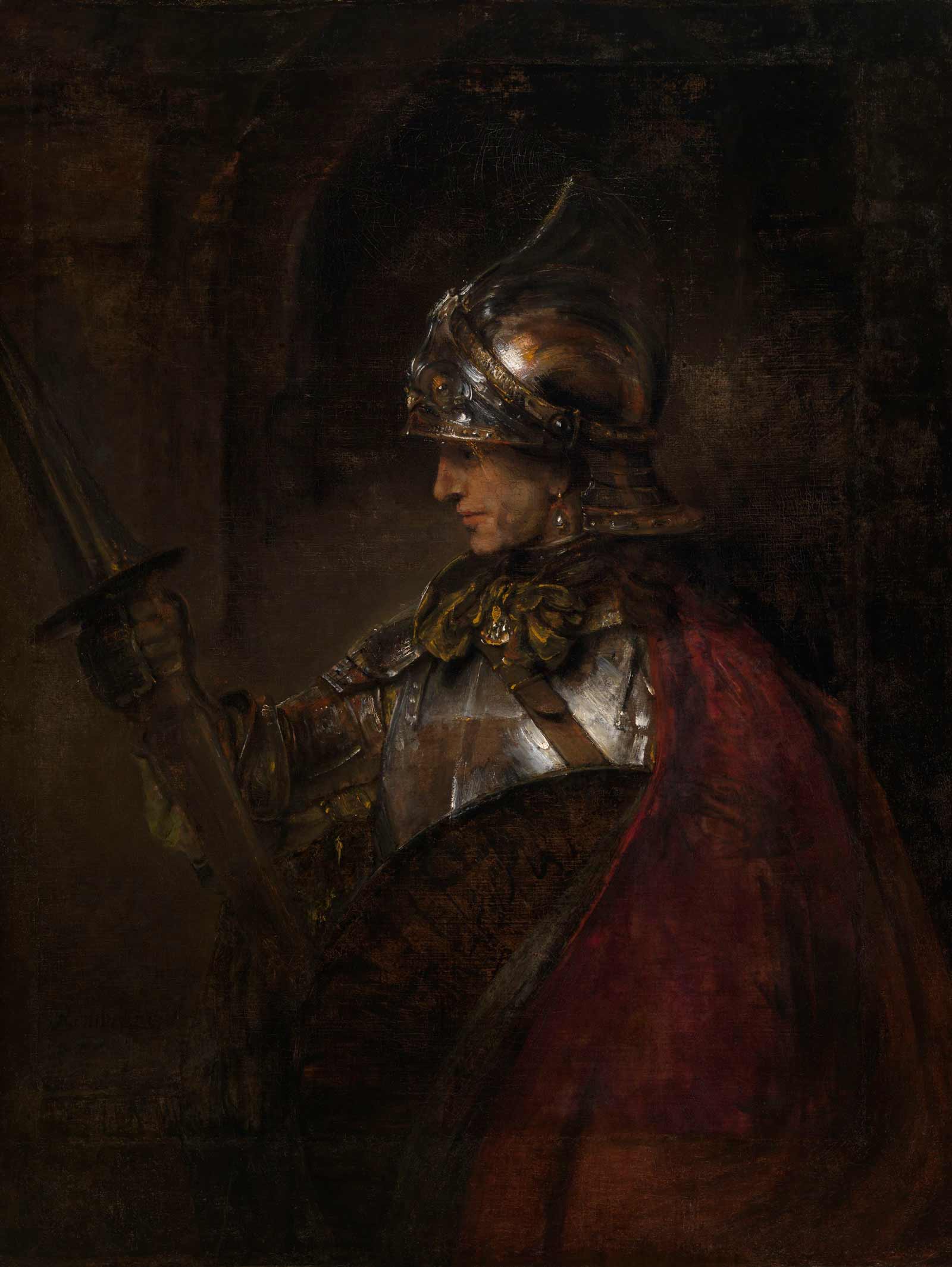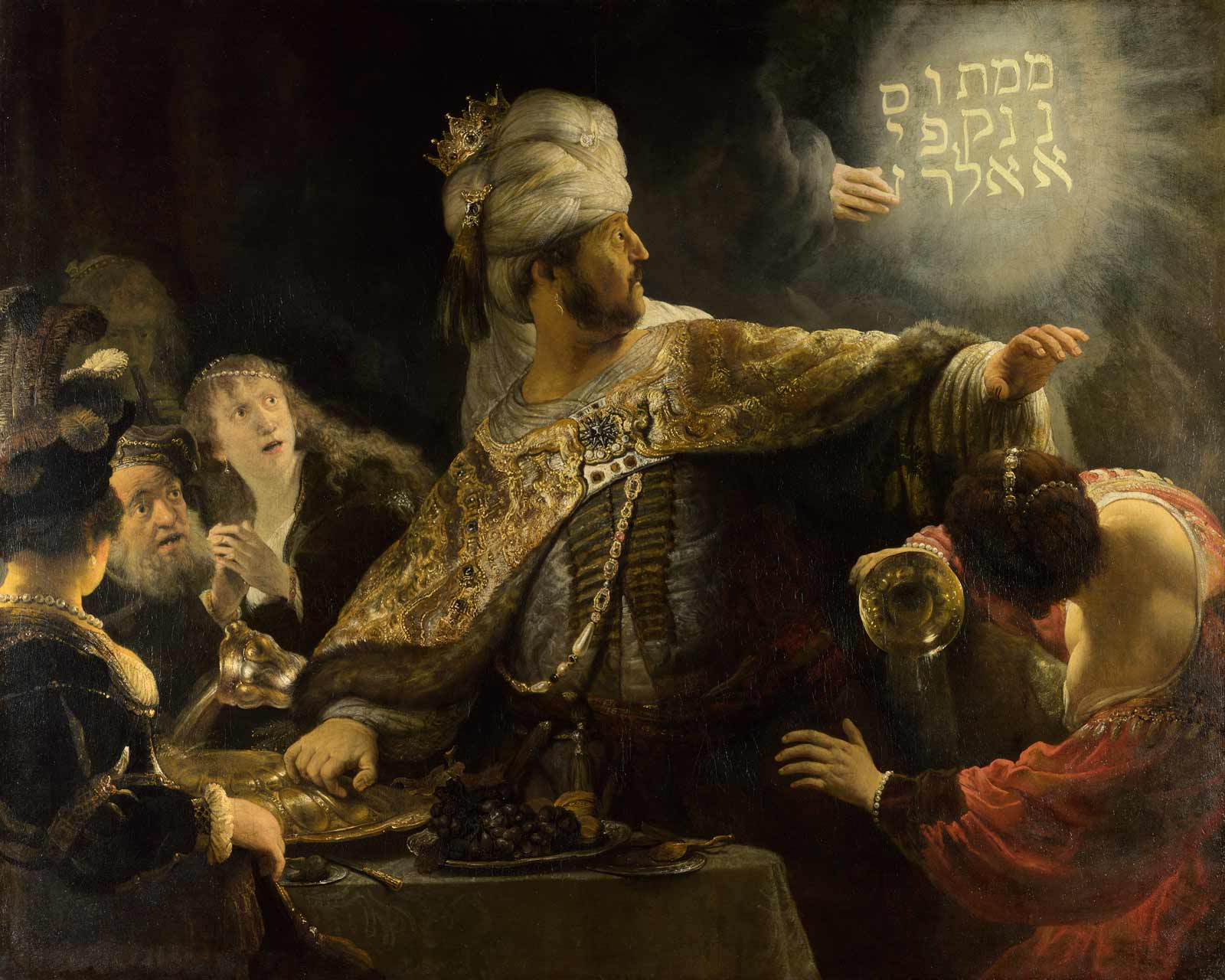In Alfred Chalon’s comical Rowlandson-like drawing, Students at the British Institution (1806), a roomful of eager artists copy the great masters. In the center, wearing a tall hat and long coat, the president of the Royal Academy, Benjamin West, is bending intently over his copy of Rembrandt’s The Mill (1645–1648). West’s genuflection sums up British reverence toward Rembrandt in the late eighteenth century, and one can understand West’s excitement. Nearby in this summer’s fine exhibition at the National Gallery of Scotland “Rembrandt: Britain’s Discovery of the Master,” which was open through October 14, hung the breathtaking painting itself—the fragile windmill poised on a bluff above the river, sharp against the shimmering evening sky, an embodiment of Holland’s debt to, and dominance over, water and wind. Constable copied this painting, and Turner was moved by its “veil of matchless colour,” adapting it for his own study of Southall Mill (1810). It reminds me, too, of other Turner paintings, like the 1822 version of Norham Castle, with its golden light, its sense of soaring aspiration and human frailty, with the people and boats on the river, dwarfed by the ruin on the hill, reflected below.
Turner and Constable were sadly absent from this show, but the sense of wonder that British artists felt when faced with Rembrandt’s work was everywhere present, tracing how collectors and artists have responded to Rembrandt’s portraits and landscapes from his lifetime to today. By the mid-nineteenth century, Britain had gathered more works by Rembrandt than any other nation. Yet many of these have now gone overseas, adding a rather wistful note to this show. The Mill, for example, which came to London after the great sale of the Duke of Orléans’s collection in 1806, was sold to an American millionaire, Peter A.B. Widener, from Philadelphia in 1911, despite a heated campaign to buy it for National Gallery, and is now in the permanent collection at the National Gallery of Art in Washington, D.C.
It is a tricky and ambitious plan to show Rembrandt’s works alongside those of his admirers, imitators, and copyists. Walking around the gallery, I noticed that many visitors skipped quickly past the works not by Rembrandt, focusing only on those by the artist himself. And indeed, this was a remarkable display, with thirteen drawings, twenty prints, and sixteen major Rembrandt paintings gathered from a host of galleries, including dramatic works like Belshazzar’s Feast (1636–1638) and the moving Rest on the Flight into Egypt (1647), as well as intimate paintings like Girl at a Window (1645), A Woman in Bed (1647), and the Gallery’s own poignant Self-Portrait of 1659, which I go to see every time I’m in Edinburgh. I’m moved by his clear, resigned gaze, as he sits in his heavy coat and large beret, his hands loosely clasped, with the light showing every wrinkle and blemish on his face.
Although Rembrandt’s presence was dominant, the exhibition told a rich and revealing story of the historical response to his work in Britain. The start was slow. There is continuing debate about whether or not Rembrandt actually visited England. The show reported rumors that he spent a year in Hull from 1661–1662, and included four ink drawings of English views, but the authenticity of the drawings is hotly debated and the Hull visit seems unlikely as there is no other evidence for this trip, and Rembrandt was working on two major commissions in Amsterdam at the time. Rembrandt’s only portraits of British subjects are of the Reverend Johannes Elison, a minister in the Dutch Reformed Church in Norwich and his wife, Maria Bockenolle, severe and calm in their black clothes and white ruffs, but these were probably commissioned when they visited their son Joan in Amsterdam in 1634. And although the great collection put together by Charles I in the 1630s included three works attributed to Rembrandt, the king didn’t take them seriously compared to those by the Italian masters.
It was Rembrandt’s prints, rather than his paintings, that first caught British attention, like the wonderful drypoint Christ Presented to the People (1655), with the gaunt figure on the platform displayed to the crowd by a turbaned Pontius Pilate, and the famous Hundred Guilder Print (1647–1649), the etching of Christ preaching, so called because of the price it reached. The diarist Samuel Pepys collected several religious prints, which he called drawingsand valued for their subjects rather than their unnamed maker, (later identified as Rembrandt), and Pepys’s rival diarist John Evelyn praised Rembrandt’s skill openly in 1662 in his Sculptura, the first history of printmaking. In the early 1700s, the great collector Hans Sloane included a fine selection in his portfolios, a small part of his vast, miscellaneous treasures that became the basis for the British Museum in 1753.
Advertisement
Soon, attention turned to the paintings, though with some bewilderment at Rembrandt’s “Bold Free way,” as Marshall Smith put it in his book The Art of Painting, in 1693. A catalogue essay by the exhibition’s curator, Christian Tico Seifert, quotes a perceptive doggerel by John Elsum from 1700:
What a coarse rugged Way of Painting’s here
Stroaks upon Stroaks, Dabbs upon Dabbs appear.
The Work you’d think was huddled up in haste,
But mark how truly ev’ry Colour’s plac’d,
With such Oeconomy in such a sort
That they each other mutually support.
Rembrant! thy Pencil plays a subtil Part,
This Roughness is contrived to hide thy Art.
This made me smile, as Rembrandt’s rugged brushwork can still cause controversy. I had just been talking to my son about the continuing discussion of An Old Man in an Armchair (1650s) at the National Gallery in London, where the left hand is very “badly” painted, hardly four brush strokes. It’s been claimed that the contrasting execution of the two hands implies an imitator—but really the painting’s genius is found in the head, not the hands. Similarly, in the Portrait of Jan Six (1654), the two hands are very different, with the lower, gloved hand a “mess”of abrupt strokes. The Rembrandt Research Project, founded in Holland in the late 1960s, demanded a “high level” of quality, and over the last thirty years, its six-volume A Corpus of Rembrandt’s Paintings has disattributed many works—but now most experts agree with John Elsum that rough painting is simply part of Rembrandt’s “pictorial vocabulary.”
This same argument rattled through the Rembrandt craze of the eighteenth century, largely prompted by the writings and collecting of Jonathan Richardson the Elder, whose work was finely illustrated in this exhibition. In the range of works from this period, from faithful copies to fakes, it’s fascinating to see the varying responses to Rembrandt’s brilliant use of light, like the radiance that seems to shine upward from the book in An Old Woman Reading (1655), and to his compositions and poses. Thus, in 1781, the Irish print-maker who was copying A Woman in Bed deliberately “made her face handsomer than in this original,” while the Reverend Matthew William Peters undressed her as Lydia (circa 1777), a coy courtesan with breasts exposed. More skillful copyists imitated Rembrandt’s vivid landscape drawings and etchings; several painters adapted his poses, as Thomas Worlidge did in his portrait of Edward Astley as Jan Six (1762). Many artists—including Jonathan Richardson the Elder, Arthur Pond, Joseph Wright of Derby, and Joshua Reynolds—copied his poses for their own self-portraits.
Reynolds’s dilemma was particularly acute. A great admirer of Rembrandt, he owned dozens of prints and drawings, several portraits, and a number of religious and historical paintings, including the extraordinary, darkly glittering A Man in Armour (1655). Yet in his Discourses VIII, in 1778, he denounced this painting for its atmospheric drama, complaining that Rembrandt “thought it of more consequence to paint light, than the objects that are seen by it.” He touched up at least one painting, Susanna and the Elders (1647), to “improve” it, and while he copied Rembrandt’s works lovingly, he found it hard to reconcile the master’s “variety,” amazing chiaroscuro, and earthiness, with his own promotion of idealized portraiture and purity of line.
This craze reached its peak in the late eighteenth century. The story continues, however, through the nineteenth century, illustrated by Rembrandt’s influence on Wilkie, and later on Holman Hunt, and on through the years to Orpen and Augustus John. Mid-century, wealthy collectors and museums hunted down Rembrandt’s works, while popular biographical curiosity prompted questionable paintings of the artist’s life, as in John Gilbert’s Rembrandt’s Studio (1869). It’s a relief to turn back to the prints, and to see Rembrandt as an inspiration for the etching revival in the second half of the nineteenth century, his etchings of beggars hovering behind works such as Fumette (1858) in Whistler’s early The French Set (1857–1861).
By contrast, the final room of the exhibition, which took us to the present day, seemed flashy and bathetic, despite fine works like Epstein’s bronze of Einstein from 1933, Auerbach’s Tree at Tretire (1975), and Kossoff’s scumbled, heavy version of A Woman Bathing in a Stream (1998). But the great virtue of this display, throughout the show, is that it made visitors look afresh at Rembrandt’s work, intently, carefully, through the eyes of artists and collectors, with the changing perspective of successive generations and movements. “Discovery of the Master” was a large, dense, and engrossing exhibition. Not only did it show Rembrandt anew, in all his complexity and brilliance, but it managed at the same time to explore the preoccupations, passions, and aspirations of the British art world over nearly four centuries.
“Rembrandt: Britain’s Discovery of the Master” was on view at the Scottish National Gallery through October 14.


